The Chilling Beauty Of The Most Gorgeous Abandoned Train Stations Around The World
There's much to love about train stations: not only are they efficient, but they sometimes travel destinations in their own right. Stations such as Grand Central in New York and Chhatrapati Shivaji Maharaj Terminus in Mumbai are renowned for their splendor. But not all train stations stay operational; whether you realize it or not, dozens of once-lively stations have been abandoned by their cities, and are quietly rotting away, according to Insider.
Here are the most famous and gorgeous abandoned train stations around the world that you can find.
1. City Hall Station, New York, New York
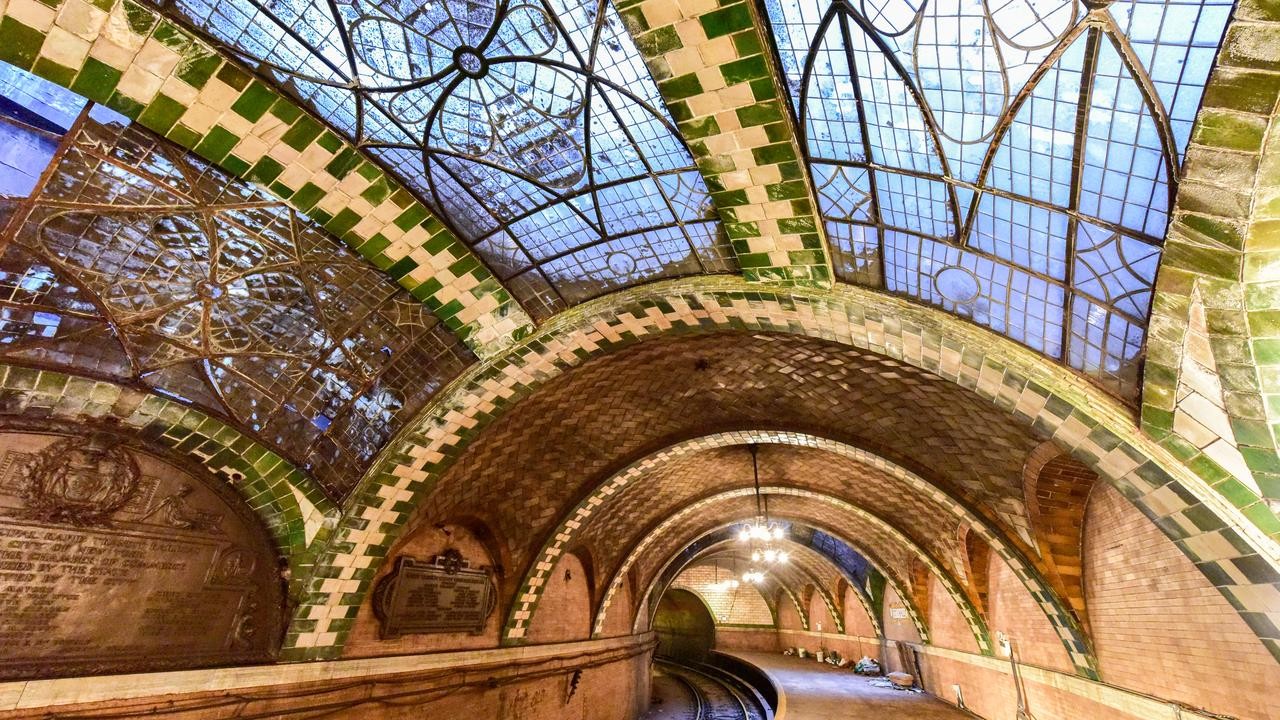 |
| Photo: Escape |
The City Hall station on the IRT local track was lavished with fine architectural details, including glass tiles and large chandeliers. However, the Gustavino vaulted ceilings and skylights were lost on busy commuters, and the stop was one of the least-used in the system. It was the only station that did not have turnstiles installed by 1923, and the nearby Brooklyn Bridge stop was frequented by the express train and closer to connecting streetcars.
Because of the curved platform, cars with center doors could not be used at this station unless they had specially modified door controls which allowed just the end doors to be opened. In 1945, the station was closed when platforms along the line were being lengthened to accommodate longer trains, and the number of passengers using this station dwindled to very few.
Another factor leading to the decline of the station’s use was the fact that a person boarding the train at City Hall with a station intended destination below City Hall or in Brooklyn would wind up on the uptown platform at the Brooklyn Bridge station. They would then have to go upstairs and down to the downtown platform to continue their journey. It was much easier to walk the short distance at street level to the Brooklyn Bridge station.
Up until the late 1990’s the passengers on the Lexington Avenue Local (today’s 6 train) had to disembark from the train at the Brooklyn Bridge stop. That is no longer the case. The skylights have been reopened, and the station lights turned back on. While passengers can not get out of the train and experience the City Hall Station as they once might have, they can stay on the train as it loops around on those tracks and heads back north.
2. Canfranc International Train Station, Huesca, Spain
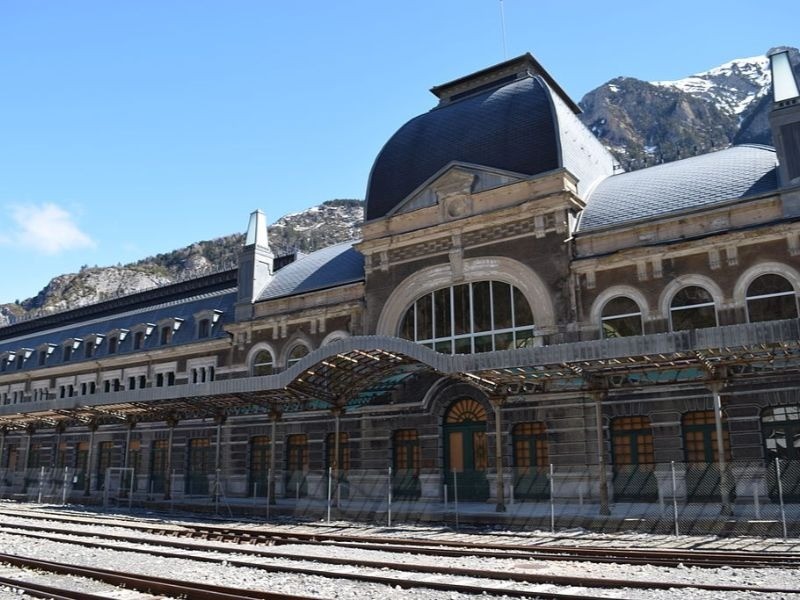 |
| Photo: Railway Technology |
Canfranc International railway station (Spanish: Estación Internacional de Canfranc) is a former international railway station in the village of Canfranc in the Spanish Pyrenees. The Somport railway tunnel, which carried the Pau–Canfranc railway under the Pyrenees into France, is located at one end of the station.
The station, which was opened during July 1928, was constructed on a grand scale to serve as a major hub for cross-border railway traffic. Its main building incorporates elaborate Beaux-Arts architecture, featuring 365 windows and 156 doors, along a length of 240 metres (790 ft). The station experienced numerous highs and lows, services having been temporarily interrupted by the intentional sealing of the Somport tunnel during the Spanish Civil War, while being extensively used by international traffic during the Second World War as the "Casablanca in the Pyrenees". The postwar era brought a period of stability and prosperity for the station and the line, although officials became increasingly pessimistic for its future during the 1960s. International services came to an abrupt end during 1970 following a train derailment that damaged a key bridge in France.
Canfranc station has remained open despite the international line's curtailment in 1970, but is served only by a handful of trains from the Spanish side alone. It has experienced a major decline and neglect, resulting in much of the site becoming derelict. The local government has ambitions to reopen the international line and to redevelop the station, which would involve the renovation of the existing station building for use as a hotel and its replacement by a new facility. In February 2020, funding for both the relaunch of international services and the station's rehabilitation was made available by the European Union.
3. Michigan Central Train Station, Detroit, Michigan
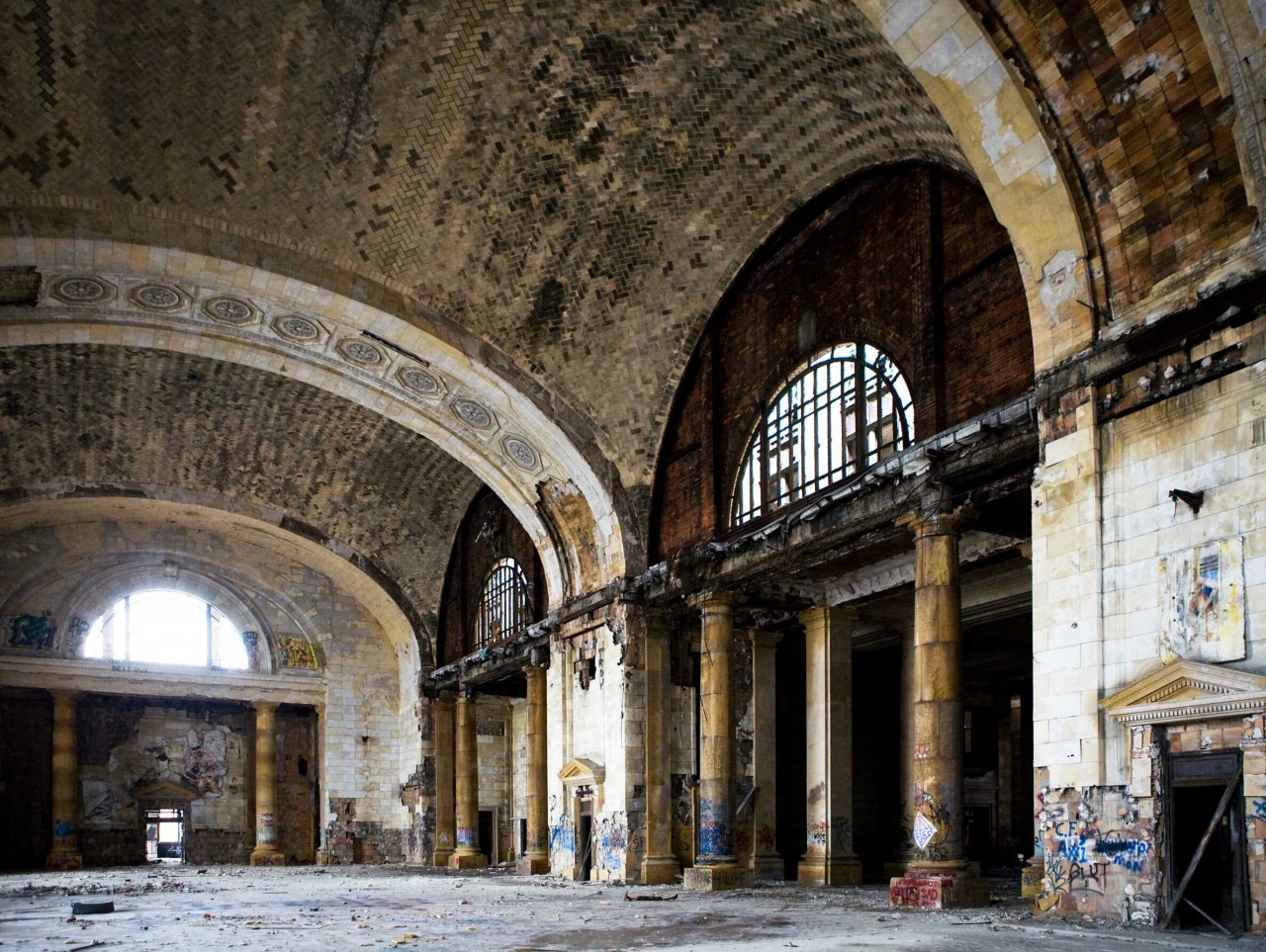 |
| Photo: Getty Images |
Michigan Central Station (also known as Michigan Central Depot or MCS) is the historic former main intercity passenger rail station in Detroit, Michigan. Built for the Michigan Central Railroad, it replaced the original depot in downtown Detroit, which was shuttered after a major fire on December 26, 1913, forcing the still unfinished station into early service. Formally dedicated on January 4, 1914, the station remained open for business until the cessation of Amtrak service on January 6, 1988. The station building consists of a train depot and an office tower with thirteen stories, two mezzanine levels, and a roof height of 230 feet (70 m). The Beaux-Arts style architecture was designed by architects who had previously worked together on Grand Central Terminal in New York, and it was the tallest rail station in the world at the time of its construction.
The building is located in the Corktown district of Detroit near the Ambassador Bridge, approximately 3⁄4 mi (1.2 km) southwest of downtown Detroit. It is located behind Roosevelt Park, and the Roosevelt Warehouse is adjacent to the east, with a tunnel connection to the MCS. The city's Roosevelt Park serves as a grand entryway to the station. It was added to the National Register of Historic Places in 1975.
Since 2011, demolition works, minor structural repairs, repairs of the roof structure, and covering the glass roof openings in the concourse have been performed. The basement, which was once full of water, has been fully drained. Barbed wire fencing has been installed in an attempt to keep out vandals and the windows in the tower have been replaced. Restoration projects and plans had gone as far as the negotiation process, but none had come to fruition until May 2018 when Ford Motor Company purchased the building for redevelopment into a mixed use facility and cornerstone of the company's new Corktown campus. Between 2018 and 2021, the building's exterior was repaired and the electrical and mechanical systems were replaced; in August 2021, the renovation entered the third and final phase, focusing on the interior.
Images of the building prior to the Ford purchase remain a premier example of ruins photography. The building has also been featured in several television programs, films and music videos.
4. Anhalter Bahnhof, Berlin, Germany
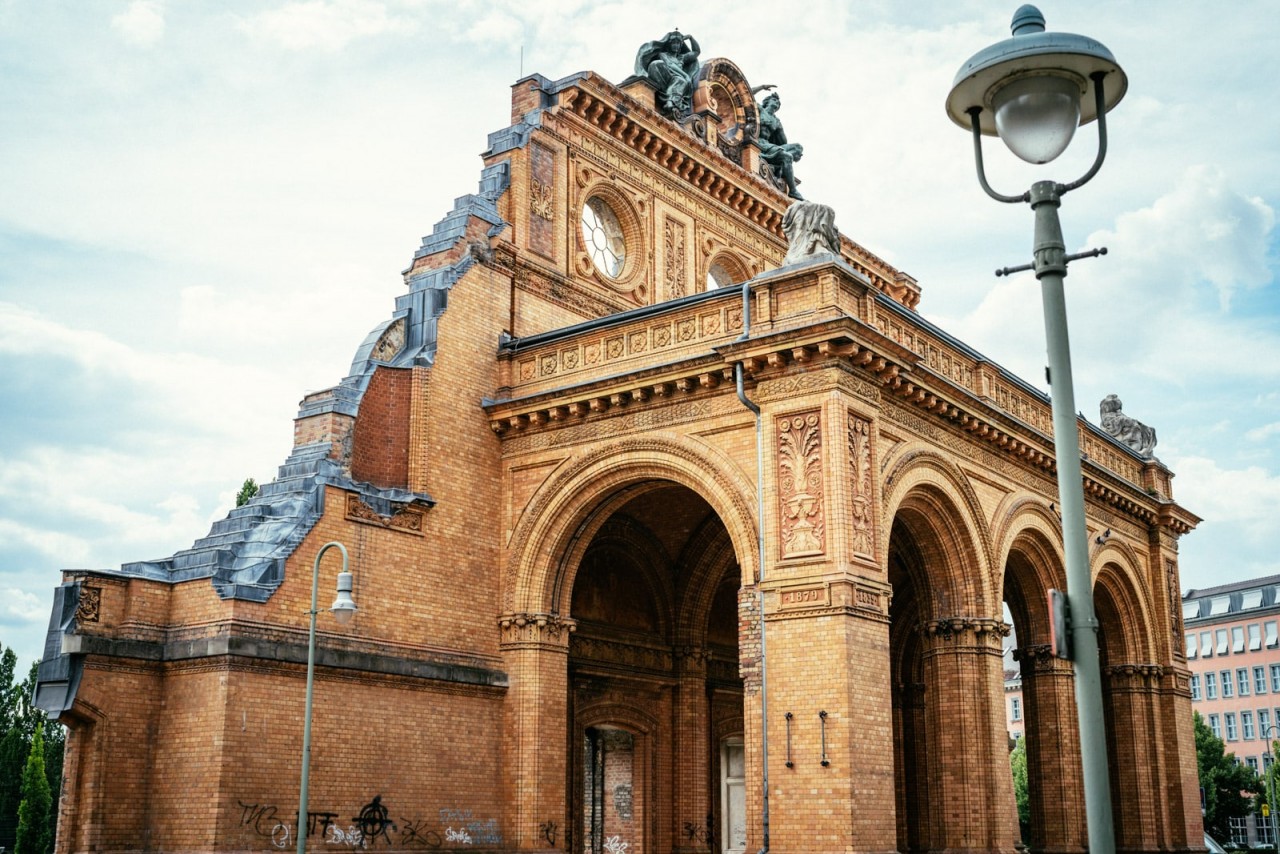 |
| Photo: Berlin Experiences |
The Anhalter Bahnhof is a former railway terminus in Berlin, Germany, approximately 600 m (2,000 ft) southeast of Potsdamer Platz. Once one of Berlin's most important railway stations, it was severely damaged in World War II, and finally closed for traffic in 1952, when the GDR-owned Deutsche Reichsbahn rerouted all railway traffic between Berlin and places in the GDR avoiding the West Berlin area. The station's name lives on in the Berlin S-Bahn station of the same name, opened in October 1939 as part of the North-South S-Bahn link.
Walking through the ruins of Anhalter Bahnhof today, it is hard to imagine what this station once was. Not only one of the largest train terminals in the world but also the first – and last – impression than many people would have had when arriving in, and departing from, Berlin.
Like a handful of other sites in the city – such as the Kaiser Wilhelm Gedächtniskirche – it also stands as a testament to human folly and the abomination of war. A scar on the landscape, where a great example of the fruits of human endeavour once stood. But as proof that tyranny must be fought. That in bombing this station in 1943, the British air force may have, at least inadvertedly, managed to derail the Nazi deportation efforts from this particular location and disrupt the official Nazi timetable for the extermination of European Jewry. Diplomatic traffic also had to be re-routed and when Adolf Hitler’s personal train arrived in Berlin for the last time in January 1945, it was not to the destroyed Anhalter Bahnhof, but far away in the Grünewald instead.
The Thousand Year Reich that Hitler dreamed of fortunately never materialised. The swimming pool that the Führer intended to eventually have constructed here is now an astro turfed sports field.
A new museum is now scheduled to be built where Anhalter Bahnhof previously stood, detailing the lives of the many people condemned to exile by the Nazi takeover, who would have bid farewell to the city from this former station.
The Exile Museum aims to open in 2025 and juxtapose the narratives of famous German emigrants, such as Thomas Mann and Albert Einstein, against the further 50,000 known individuals who fled the Nazi regime and have largely remain nameless. Certainly the location could not be more fitting.
5. Lagos Old Railway Station, Lagos, Portugal
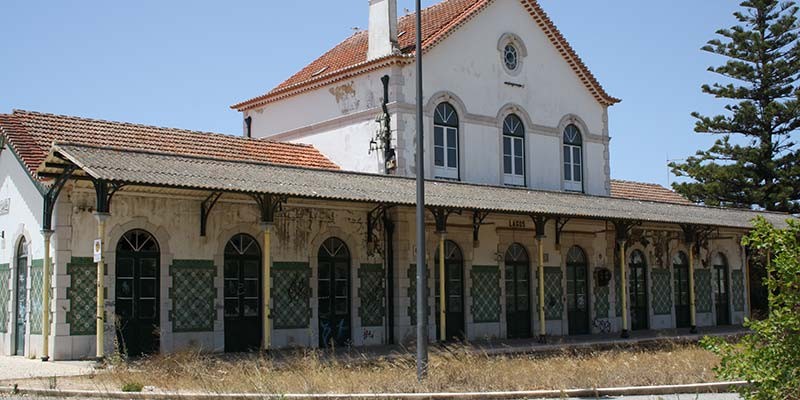 |
| Photo: Portugal Resident |
The Lagos railway station is the western terminus of the Algarve line, which serves the city of Lagos, in the Faro District, in Portugal. It opened on the 7th of July 1922. The building was replaced by a new structure in 2003. Lagos railway station is one of the two most extreme points in the Eurasian rail network. The other extreme is located in Phuoc Diem, Vietnam. This is set to change in December 2021 upon the completion of the Boten–Vientiane railway in Laos, at which point the furthest extremes in the Eurasian rail network will be Cascais, Portugal and Singapore.
The Lagos Old Railway Station opened on the western end of the Algarve line back in 1922. While it operated for many decades, it was replaced by a new, more modern building in 2003. Today, visitors still drop by to photograph the red roof and mosaic tiles.
6. Old Central Station, Jersey City, New Jersey
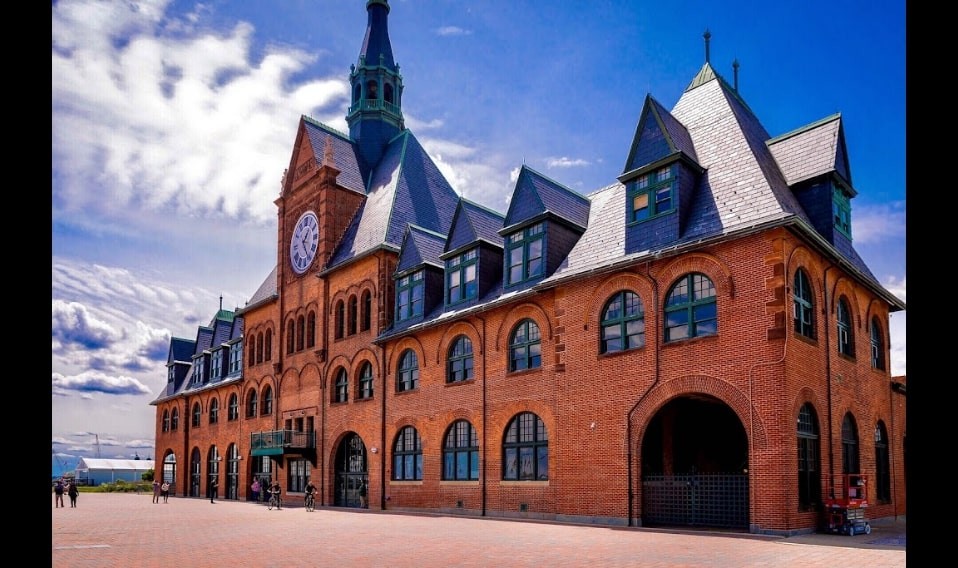 |
| Photo: Ali Shahverdiani |
The train shed on the other side of the terminal has been abandoned since 1967, with trees and other foliage sprouting through its open roof where light shines down on the empty train tracks. Its beautiful green patina copper roofing was stolen by thieves. The terminal building was recently restored and serves as a museum and ferry departure point for the Statue of Liberty and Ellis Island, but the tracks themselves were left to nature.
The terminal was constructed in 1889, and at the peak of service for the Central Railroad of New Jersey there were millions of passengers a year passing through. Many immigrants to the United States also came directly from Ellis Island, bypassing New York City to make their way through the United States by way of New Jersey. Unfortunately, the Great Depression hit hard, as did the rise of the automobile, and a decline in business caused the terminal to shut down in 1967.
The old departure boards remain at the tracks, where stately metal columns still loom. Alongside the terminal in Liberty State Park are even a few old train cars. Stepping out of the terminal to face the Hudson, you’ll find wooden bricks still embedded in the ground (although they have to be regularly replaced), and if you look up at the terminal building’s clock tower you can see science, commerce, industry, and agriculture sculpted on its four corners, relics of when this really was a center of economic movement in the area. The old tracks are now fenced off, mainly because parts of the columns and roof are collapsing. It’s still possible to get good pictures from outside.
7. 16th Street Station, Oakland, California
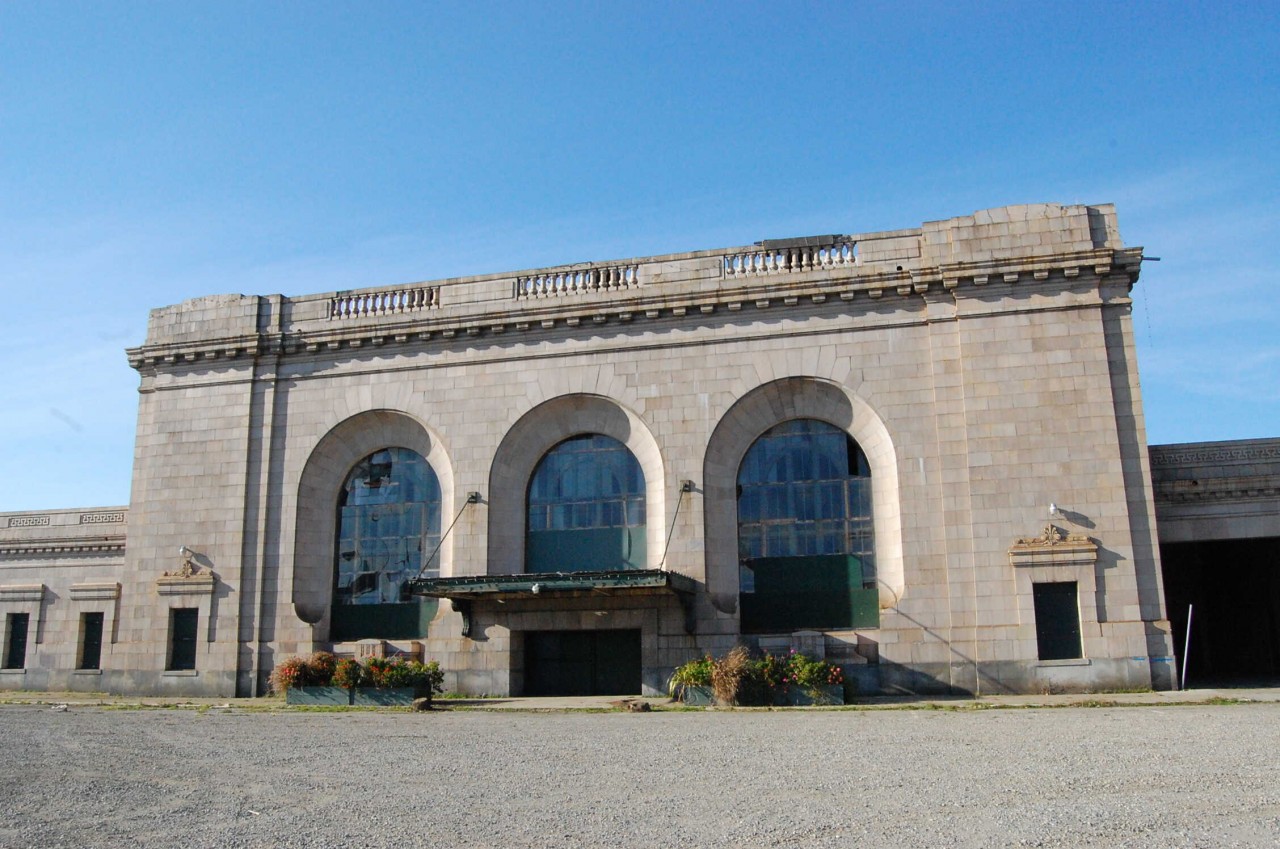 |
| Photo: Wikipedia |
16th Street station (Oakland Central) is an abandoned Southern Pacific Railroad station in the Prescott neighborhood of Oakland, California, United States. The Beaux-Arts building was designed by architect Jarvis Hunt, a preeminent railroad station architect, and opened in 1912. The station has not been served by trains since 1994.
Built between 1910-1912, the 16th Street Station was once home to the Southern Pacific Railroad at ground level and the East Bay Electric Lines - also known as the Interurban Electric Railway (IER) - on the elevated tracks. The classically inspired Beaux Arts style building replaced an earlier, simpler wooden structure, and shows the marks of the growing “City Beautiful” movement that had begin a few years earlier. The movement encouraged the construction of sites of inspiring grandeur, designed to elevate the cities around them.
The Southern Pacific Railway was founded in San Francisco in 1861, and soon merged with the Central Pacific Railroad of the city’s famous Big Four railroad tycoons, Charles Crocker, Leland Stanford, Mark Hopkins and C. P. Huntington.
When the station was built, the tracks which ran along its side were at the waterfront (now massively infilled), and served as a secondary station to the city’s main station, known as the “Mole” and which served as the official end of the Transcontinental Railway. Ferries would pick up passengers for transit on to San Francisco. Located at the site of Middle Harbor Shoreline Park, the Mole was demolished in 1960.
The East Bay Electric Lines were added in 1914 and for a few years were notable for running along the lower deck of the Bay Bridge to San Francisco. The electric trains ran for 26 years.
The station began to decline with the overall decline in rail transport in the second half of the 20th century, and was badly damaged in the 1989 Loma Prieta earthquake, rendering it structurally unsound.
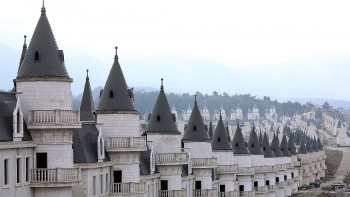 | The Tale Behind Turkey’s Ghost Town With Hundred Abandoned Castles Hundreds of abandoned fairytale castles in Burj Al Babas, Turkey, which was once designed to be luxurious resorts for wealthy people. |
 | Scotland: Haunting Images Of A 30-Year-Old Abandoned House An abandoned house from the 1990s, which were pictured by No Limits Urbex, showing the images of furnitures, toys, and other parts of the ruins ... |
 | 12 Breathtaking Forgotten Places And Ruins Around The World 12 breathtaking forgotten places, ruins and historical relics, shared in the ‘Abandoned Beauties’ Facebook group. |
Recommended
 World
World
US, China Conclude Trade Talks with Positive Outcome
 World
World
Nifty, Sensex jumped more than 2% in opening as India-Pakistan tensions ease
 World
World
Easing of US-China Tariffs: Markets React Positively, Experts Remain Cautious
 World
World
India strikes back at terrorists with Operation Sindoor
 World
World
India sending Holy Relics of Lord Buddha to Vietnam a special gesture, has generated tremendous spiritual faith: Kiren Rijiju
 World
World
Why the India-US Sonobuoy Co-Production Agreement Matters
 World
World
Vietnam’s 50-year Reunification Celebration Garners Argentine Press’s Attention
 World
World


